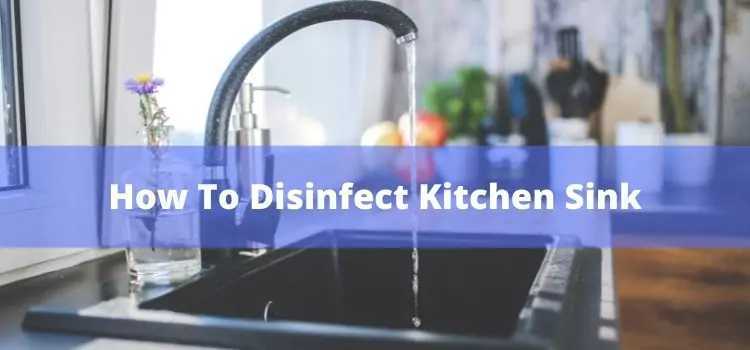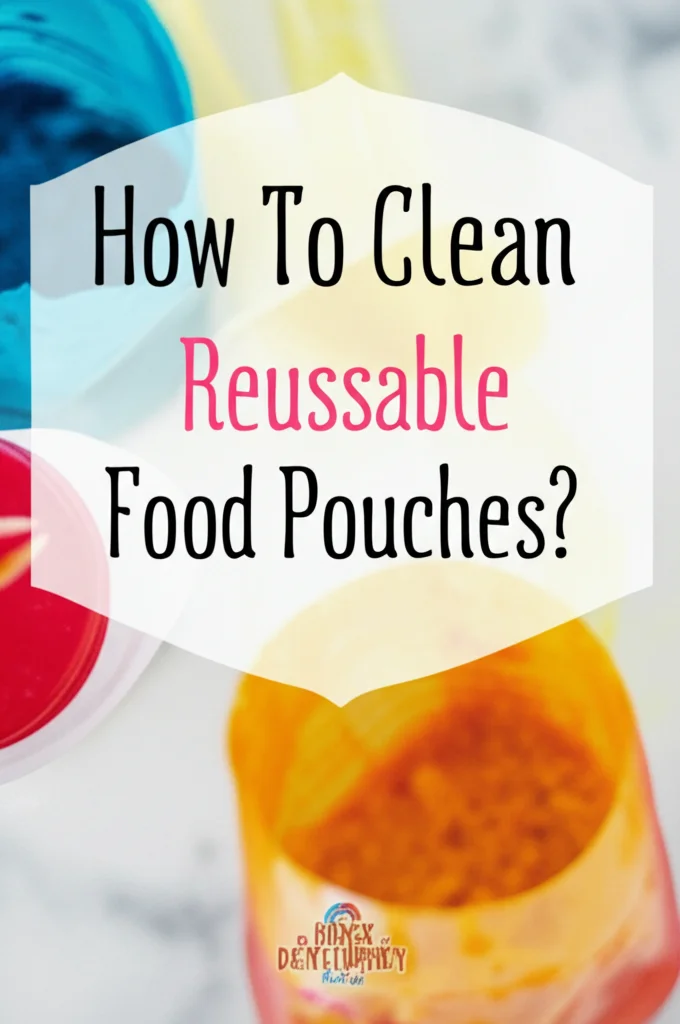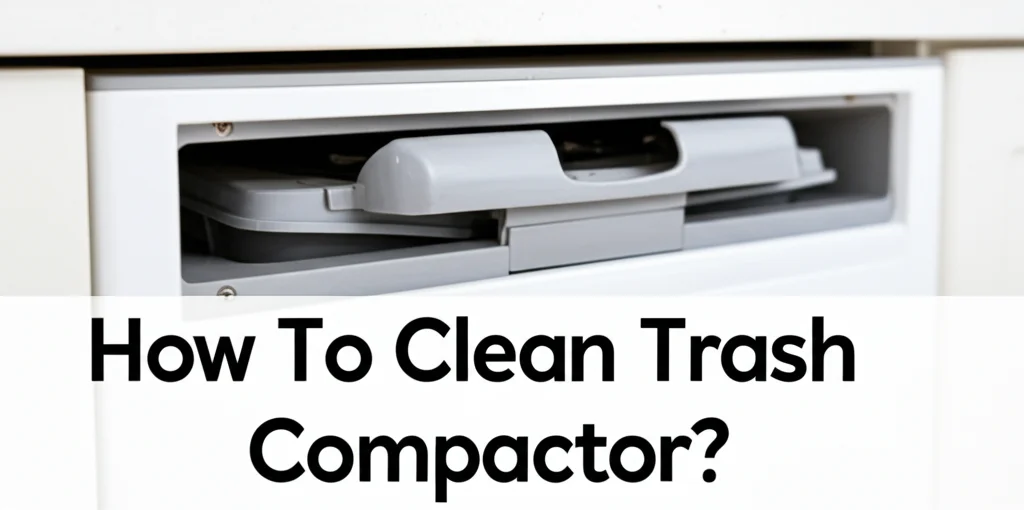· Kitchen Cleaning · 7 min read
How To Disinfect Kitchen Sink

Surfaces like the kitchen sink, stovetop, and countertops are perfect places for bacteria to grow and multiply.
Especially the kitchen sink can easily become contaminated with food and other contaminants, making it a breeding ground for germs.
To avoid such an unenviable situation, you need to disinfect your kitchen sink once in a while.
And you can do that by using some commercial cleaner or natural cleaning agents that are totally safe to use in your kitchen sink.
How to Disinfect the Kitchen Sink – Five Simple Steps
Interested in knowing? Then scroll down and follow the steps we shared below carefully to disinfect your kitchen sink effectively.
Before you disinfect the kitchen sink, you need to prep the kitchen sink by cleaning it. Did you clean the kitchen sink or not? If yes, then you can skip steps one and two and follow other steps.
Let’s proceed and know how to disinfect the kitchen sink.
Equipment You Will Need
Warm water, dish liquid, white vinegar, hydrogen peroxide, sponge, microfiber cloth, kitchen towel, hand gloves, face mask, and goggles.
Step one: Empty The Kitchen Sink and make Cleaning Solution
If your sink has any kind of dirt, spills, or residue, clean it first. Pick up the residue or spills and drain the sink well. Ensure there is no dirt available.
To make the DIY solution, take one cup of warm water in a bowl and add two tablespoons of dish liquid. Mix them well until the dish liquid dissolves.
Step two: Clean The Kitchen Sink
Now you have to clean the kitchen sink and prepare it for disinfecting. You can use a commercial sink cleaner or our DIY cleaning solution to clean the sink.
We recommend avoiding any harsh chemical-based cleaners because they can damage the sink. Take the solution we made in step one, dip a sponge into it, and squeeze an extra solution.
Wipe away the entire kitchen sink with this cleaning solution dampened sponge and leave it for a few minutes.
Now rinse away the kitchen sink with cold water, do it twice to make sure the entire kitchen sink is cleaned properly.
Step Three: Disinfect the Kitchen Sink
If you own a steel kitchen sink, you have to disinfect it with vinegar or hydrogen peroxide, and if it’s a porcelain sink, you can disinfect it with bleach.
As most of us own a steel sink, let’s know how to disinfect a steel sink.
Before starting the disinfection process, make sure you have to wear protective gear; getting in touch with your skin can cause irritation and other skiing problems. Sometimes people with asthma face breathing problems.
You can disinfect steel sinks in two ways, using vinegar and hydrogen peroxide.
- Option One: Vinegar
Plug the drain, fill half of it with warm water and rest with white vinegar. Use a large spoon or something like it to mix the warm water and white vinegar.
You can also make this solution first and then pour it into the sink.
Damp a sponge in this solution and wipe away the kitchen sink handles and faucet area. Leave it for 8-10 minutes in the sink.
Once time is up, drain the sink and wipe away with clean water a damp sponge to completely clean the residue. Allow it to air dry.
- Option two: Hydrogen Peroxide
Disinfecting with hydrogen peroxide is the same as the vinegar process. You just have to make the solution with different ingredients and different amounts.
Take a gallon of water, add one-fourth cup of hydrogen peroxide and mix it well. Next, follow the same disinfecting process we described above with vinegar.
Step Four: Polish the Kitchen Sink
Once disinfecting is done, it’s time to polish the kitchen sink to get back its shine. After using acidic ingredients, the steel sink won’t be the same shiny sink.
So you have to polish it. You can polish it with olive oil or lemon juice. Take some olive oil or lemon juice in a microfiber cloth and wipe away the sink.
Step five: Wipe Away With A Dry Microfiber Cloth.
This step isn’t to be followed after cleaning or disinfecting the sink; try to follow it every time you use the kitchen sink.
After using or cleaning it, make sure to wipe away the kitchen sink with a dry microfiber cloth.
It will keep the sink in good condition and will increase its lifespan.
How to Disinfect Kitchen Sink with Bleach
Disinfecting a kitchen sink with the beach is simple when you know the right way to use it.
If you use bleach without knowing how to use it, you will damage your kitchen sink.
Bleach is a highly effective disinfectant; that’s why it’s alone enough for disinfecting.
And you can’t mix it with any other ingredients ( won’t need) leaving the water.
Mixing with other cleaning agents like vinegar, rubbing alcohol, or ammonia can cause a chemical reaction. So be careful.
- Take warm water and bleach in a 1:50 ratio. You can mix it outside the sink or directly fill the basin with warm water and add a capful of bleach.
- Use a large stick and mix the ingredients.
- Dip a sponge in this solution and wipe away the kitchen faucet, including the handles and other outside parts. Leave it for 5-8 minutes.
- Once time is up, open the plug and drain the solution. Now rinse away with clean water. To clean additional parts, use a damp sponge and wipe away.
- Use a dry microfiber cloth or kitchen towel and wipe away the entire kitchen sink to absorb excess moisture and allow it to dry naturally.
Frequently Asked Questions
Can I Use Bleach to Clean the Kitchen Sink?
Can you use bleach to clean the kitchen sink or not? It depends on the type of sink you are using.
If your kitchen sink is made of plastic or porcelain, you can use bleach to clean it.
But if it’s made of stainless steel or copper, avoid bleach if you don’t want to damage it.
How Do I Disinfect My Kitchen Sink without Bleach?
To disinfect your kitchen sink without bleach, you can use hydrogen peroxide. Fill the kitchen sink with water, add 3 drops of hydrogen peroxide and swish the solution around. Leave it for 8 minutes.
Drain the solution, rinse away with water and dry the entire kitchen sink with a microfiber cloth or kitchen towel.
How Do You Kill Bacteria in Your Sink?
Fill the sink with warm water and add bleach in a 1:50 ratio. Bleach is highly effective in cleaning bacteria, mold, and germs.
Leave it for 5 minutes to kill bacteria. Drain the sink, rinse away completely with cold water, and dry with a kitchen towel.
How Do I Sanitize My Kitchen Sink?
How to sanitize your kitchen sink depends on the type of sink you are using. If your sink is made of copper, brass, or stainless steel, fill the basin with boiling water and vinegar in equal portions.
Keep the disinfectant in the kitchen sink for up to 10 minutes, drain and rinse away with cold water. Mop with a dry microfiber cloth and let it dry naturally.
And if the kitchen sink is made of plastic or porcelain, sanitize it with chlorine bleach. Follow the same method; just use bleach and water in the 1:50 portion.
Conclusion
Disinfecting your kitchen sink can be a daunting task, but it is just a matter of following a few simple steps and a little bit of effort. But don’t think it’s too simple because not following the right method by using the right ingredients in the right amount can cause a disaster.
So follow each step as we mentioned above on how to disinfect the kitchen sink, especially be accurate about timing.
Don’t keep the solution in the sink for more than the maximum time we mentioned above; keeping abrasive ingredients in the kitchen sink for a long time will snatch its shine.




